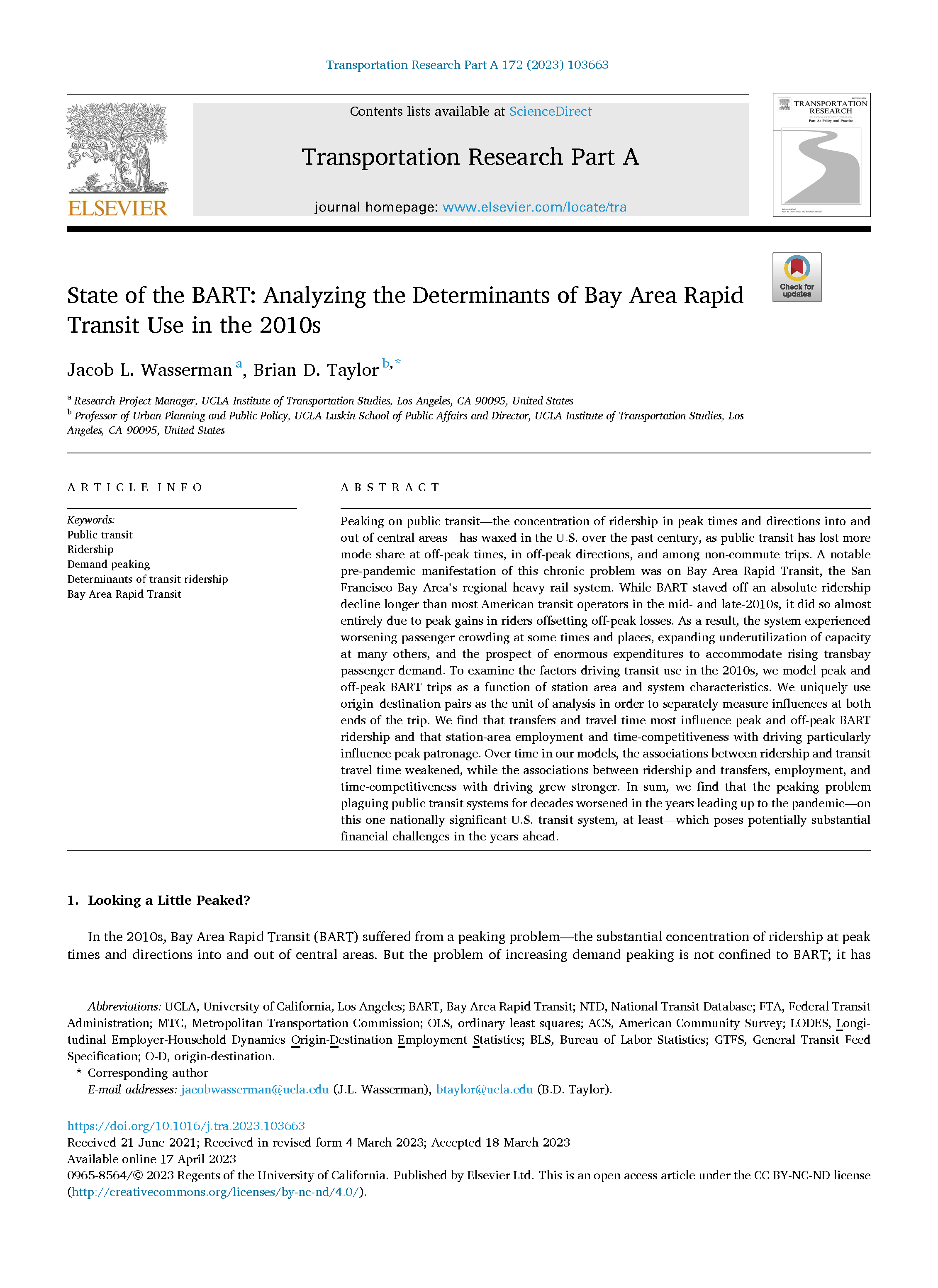Date: June 1, 2023
Author(s): Jacob L. Wasserman, Brian D. Taylor
Abstract
Peaking on public transit—the concentration of ridership in peak times and directions into and out of central areas—has waxed in the U.S. over the past century, as public transit has lost more mode share at off-peak times, in off-peak directions, and among non-commute trips. A notable pre-pandemic manifestation of this chronic problem was on Bay Area Rapid Transit, the San Francisco Bay Area’s regional heavy rail system. While BART staved off an absolute ridership decline longer than most American transit operators in the mid- and late-2010s, it did so almost entirely due to peak gains in riders offsetting off-peak losses. As a result, the system experienced worsening passenger crowding at some times and places, expanding underutilization of capacity at many others, and the prospect of enormous expenditures to accommodate rising transbay passenger demand. To examine the factors driving transit use in the 2010s, we model peak and off-peak BART trips as a function of station area and system characteristics. We uniquely use origin–destination pairs as the unit of analysis in order to separately measure influences at both ends of the trip. We find that transfers and travel time most influence peak and off-peak BART ridership and that station-area employment and time-competitiveness with driving particularly influence peak patronage. Over time in our models, the associations between ridership and transit travel time weakened, while the associations between ridership and transfers, employment, and time-competitiveness with driving grew stronger. In sum, we find that the peaking problem plaguing public transit systems for decades worsened in the years leading up to the pandemic—on this one nationally significant U.S. transit system, at least—which poses potentially substantial financial challenges in the years ahead.
About the Project
Public transit ridership has been falling nationally and in California since 2014. The San Francisco Bay Area, with the state’s highest rates of transit use, had until recently resisted those trends, especially compared to Greater Los Angeles. However, in 2017 and 2018 the region lost over five percent (>27 million) of its annual riders, despite a booming economy and service increases. This report examines Bay Area transit ridership to understand the dimensions of changing transit use, its possible causes, and potential solutions. We find that: 1) the steepest ridership losses have come on buses, at off-peak times, on weekends, in non-commute directions, on outlying lines, and on operators that do not serve the region’s core employment clusters; 2) transit trips in the region are increasingly commute-focused, particularly into and out of downtown San Francisco; 3) transit commuters are increasingly non-traditional transit users, such as those with higher incomes and automobile access; 4) the growing job-housing imbalance in the Bay Area is related to rising housing costs and likely depressing transit ridership as more residents live in less transit-friendly parts of the region; and 5) ridehail is substituting for some transit trips, particularly in the off-peak. Arresting falling transit use will likely require action both by transit operators (to address peak capacity constraints; improve off-peak service; ease fare payments; adopt fare structures that attract off-peak riders; and better integrate transit with new mobility options) and public policymakers in other realms (to better meter and manage private vehicle use and to increase the supply and affordability of housing near job centers).


